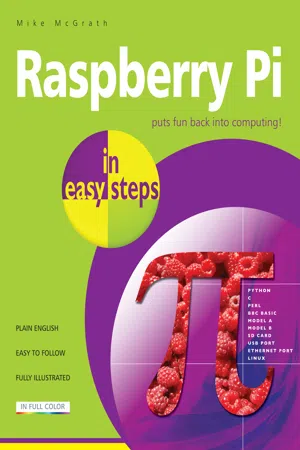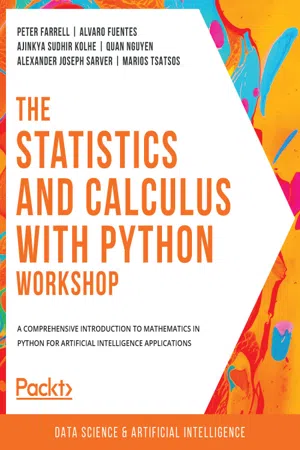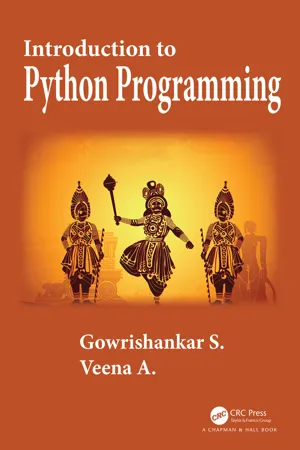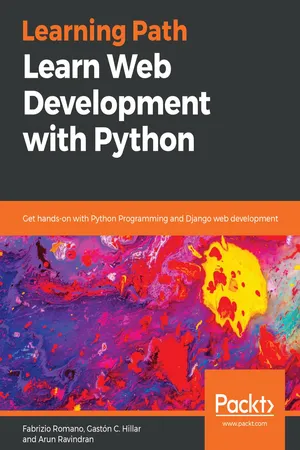Computer Science
if else in Python
In Python, the "if else" statement is used to create conditional logic. It allows the program to execute different blocks of code based on whether a specified condition is true or false. If the condition is true, the code within the "if" block is executed; otherwise, the code within the "else" block is executed. This provides a way to control the flow of the program based on specific conditions.
Written by Perlego with AI-assistance
Related key terms
Related key terms
1 of 4
Related key terms
1 of 3
4 Key excerpts on "if else in Python"
- eBook - ePub
- Mike McGrath(Author)
- 2013(Publication Date)
- In Easy Steps Limited(Publisher)
False. This allows a program to proceed in different directions according to the result of the test and is known as “conditional branching”.The tested expression must be followed by aIndentation of code is very important in Python as it identifies code blocks to the interpreter – other programming languages use braces.:colon, then statements to be executed when the test succeeds should follow below on separate lines and each line must be indented from theiftest line. The size of the indentation is not important but it must be the same for each line.Optionally, aniftest can offer alternative statements to execute when the test fails by appending anelsekeyword after the statements to be executed when the test succeeds. Theelsekeyword must be followed by a:colon and aligned with theifkeyword but its statements must be indented in a likewise manner.Aniftest block can be followed by an alternative test using theelifkeyword (“else if ”) that offers statements to be executed when the alternative test succeeds. This too must be aligned with theifkeyword, followed by a:colon, and its statements indented.The syntax for theif-elif-elsestructure looks like this:if test-expression-1 :statements-to-execute-when-test-expression-1-is-Trueelif test-expression-2 :statements-to-execute-when-test-expression-2-is-Trueelse :Typically, the test expression might make a comparison between two values using one of these Python comparison operators:statements-to-execute-when-test-expressions-are-FalseOperator:Description:==Equality – returns True when values ARE equal !=Inequality – returns True when values are NOT equal >Greater Than, returns True when first value is higher <Less Than, returns True when first value is lower >=Greater Than Or Equal <=Less Than Or Equal if.pyTheif: elif: else:sequence is the Python equivalent of theswitchorcasestatements found in other languages. - eBook - ePub
- Peter Farrell, Alvaro Fuentes, Ajinkya Sudhir Kolhe, Quan Nguyen, Alexander Joseph Sarver, Marios Tsatsos(Authors)
- 2020(Publication Date)
- Packt Publishing(Publisher)
if block is executed when both of its conditions are satisfied:if [condition 1] and [condition 2]: [instruction set]Instead of doing this, we can use the or keyword in a composite condition, which will display positive (true) if either the condition to the left or to the right of the keyword is true. It is also possible to keep extending a composite condition with more than one and /or keyword to implement conditionals that are nested on multiple levels.When a condition is not satisfied, we might want our program to execute a different set of instructions. To implement this logic, we can use elif and else statements, which should immediately follow an if statement. If the condition in the if statement is not met, our program will move on and evaluate the subsequent conditions in the elif statements; if none of the conditions are met, any code inside an else block will be executed. An if...elif...else block in Python is in the following form:if [condition 1]: [instruction set 1] elif [condition 2]: [instruction set 2] ... elif [condition n]: [instruction set n] else: [instruction set n + 1]This control flow method is very valuable when there is a set of possibilities that our program needs to check for. Depending on which possibility is true at a given moment, the program should execute the corresponding instructions.Exercise 1.01: Divisibility with Conditionals
In mathematics, the analysis of variables and their content is very common, and one of the most common analyses is the divisibility of an integer. In this exercise, we will use if statements to consider the divisibility of a given number by 5, 6, or 7.Perform the following steps in order to achieve this:- Create a new Jupyter notebook and declare a variable named x whose value is any integer, as shown in the following code:x = 130
- After that declaration, write an if statement to check whether x is divisible by 5 or not. The corresponding code block should print out a statement indicating whether the condition has been met:if x % 5 == 0: print('x is divisible by 5') Here, % is the modulo operator in Python; the var % n expression returns the remainder when we divide the var variable by the number, n
- eBook - ePub
- Gowrishankar S, Veena A(Authors)
- 2018(Publication Date)
- Chapman and Hall/CRC(Publisher)
3 Control Flow StatementsAIM Understand if, if…else and if…elif…else statements and use of control flow statements that provide a means for looping over a section of code multiple times within the program. LEARNING OUTCOMES At the end of this chapter, you are expected to • Use if, if…else and if…elif…else statements to transfer the control from one part of the program to another. • Write while and for loops to run one or more statements repeatedly.• Control the flow of execution using break and continue statements.• Improve the reliability of code by incorporating exception handling mechanisms through try-except blocks.Python supports a set of control flow statements that you can integrate into your program. The statements inside your Python program are generally executed sequentially from top to bottom, in the order that they appear. Apart from sequential control flow statements you can employ decision making and looping control flow statements to break up the flow of execution thus enabling your program to conditionally execute particular blocks of code. The term control flow details the direction the program takes.The control flow statements (FIGURE 3.1 ) in Python Programming Language are1. Sequential Control Flow Statements: This refers to the line by line execution, in which the statements are executed sequentially, in the same order in which they appear in the program.2. Decision Control Flow Statements: Depending on whether a condition is True or False, the decision structure may skip the execution of an entire block of statements or even execute one block of statements instead of other (if, if…else and if…elif…else).3. Loop Control Flow Statements: This is a control structure that allows the execution of a block of statements multiple times until a loop termination condition is met (for loop and while - eBook - ePub
Learn Web Development with Python
Get hands-on with Python Programming and Django web development
- Fabrizio Romano, Gaston C. Hillar, Arun Ravindran(Authors)
- 2018(Publication Date)
- Packt Publishing(Publisher)
if it's raining, then I'm taking the umbrella; and if I'm late for work, then I'll call my manager .The main tool is the if statement, which comes in different forms and colors, but basically it evaluates an expression and, based on the result, chooses which part of the code to execute. As usual, let's look at an example:# conditional.1.pylate = True if late: print('I need to call my manager!')This is possibly the simplest example: when fed to the if statement, late acts as a conditional expression, which is evaluated in a Boolean context (exactly like if we were calling bool(late)). If the result of the evaluation is True, then we enter the body of the code immediately after the if statement. Notice that the print instruction is indented: this means it belongs to a scope defined by the if clause. Execution of this code yields:$ python conditional.1.py I need to call my manager!Since late is True, the print statement was executed. Let's expand on this example: # conditional.2.pylate = False if late: print('I need to call my manager!') #1 else: print('no need to call my manager...') #2 This time I set late = False, so when I execute the code, the result is different:$ python conditional.2.py no need to call my manager...Depending on the result of evaluating the late expression, we can either enter block #1 or block #2, but not both . Block #1 is executed when late evaluates to True, while block #2 is executed when late evaluates to False. Try assigning False/True values to the late name, and see how the output for this code changes accordingly.The preceding example also introduces the else clause, which becomes very handy when we want to provide an alternative set of instructions to be executed when an expression evaluates to False within an if clause. The else clause is optional, as is evident by comparing the preceding two examples.
Index pages curate the most relevant extracts from our library of academic textbooks. They’ve been created using an in-house natural language model (NLM), each adding context and meaning to key research topics.
Explore more topic indexes
Explore more topic indexes
1 of 6
Explore more topic indexes
1 of 4



